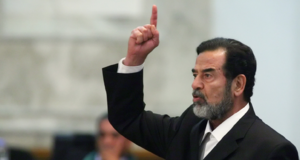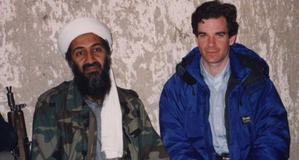The Islamic Middle Ages, a Fractured Polity, and the Flourishing of a Cultural and Scientific Renaissance
By
2012, Vol. 4 No. 09 | pg. 1/2 | »
KEYWORDS:
Ibn Khaldun highlighted that societies in their natural state exist in the rural countryside, where the struggle of daily life binds kinsmen together (Abdullah, 2012a). Defining this strong familial bond as “asabiyya,” he stated that eventually this bond of zealous loyalty to one’s brethren becomes the driving force behind conquest (Abdullah, 2012a). However, after conquest, as time passes and individuals delve in their material gains and elitist dispositions, the once impeachable bond of asabiyya begins to disintegrate. At this stage, fragmentation of the state is inevitable, leading to eventual collapse. The Islamic Middle Ages were a time period when the Abbasid dynasty had reached this stage. Nevertheless, despite increasing political fragmentation, insecurity and economic decline, the Middle Ages paradoxically witnessed the flourishing of cultural and scientific production due to the populace gaining political independence, coupled with a strong sense of social unity at the grassroots level. The population gained political independence primarily as the role of the government was transformed from a watchdog to a passive authority struggling for stability. Initially the government’s role was to establish an Islamic state based on the Quran and Sunnah according to the vision of the Prophet, but this ideal never materialized over time. While the Abbasids and Alids may have opted for this plan, the dynasts of the Middle Ages did not have the same vision. They, in pursuit of preserving their gains, defined the government’s role as primarily a tax collecting body (Kennedy, 2004). The government then no longer sought after peoples’ security or moral upbringing but rather pursued its own stability and wealth. In time, as the caliphate continually dismantled into numerous successor states ruled by various dynasties such as the Buwayhids, Seljuks, Uqaylids and Marwanids amidst others, the citizens gained political independence (Kennedy, 2004). Each successor state was faced with internal conflicts which deterred it from ensuring assertive control over the population. In Iraq and Iran for example, although the Buwayhid takeover in the 10th century was initially firm due to strong militia and familial ties, soon sources of conflict erupted (Kennedy, 2004). Firstly, the question of succession to the principalities arose. The Buwayhids considered the entire state as a possession of the family so relatives often interfered with each other to ensure the land stayed in the families’ possession (Kennedy, 2004). Since there was no distinct mode of inheritance, this also opened doors for princes tied to the dynasty by marriage to take over the land, resulting in contention. Secondly, although the rich lands of Iraq served as plenty of “Iqta land” as a source of revenue for troops, there was chaos over its distribution because of ongoing conflict between the Turkish and Daylamite soldiers (Kennedy, 2004). Immersed in its own internal conflict, the Buwayhid government and its like failed to be a firm, all-embracing Islamic polity, giving opportunities for citizens to look to each other for patronage. This political independence was coupled with social unity in order to produce the fruits of the Renaissance. The social unity rose from two interconnected facets, namely a sense of ideological coherence of a diverse populace and the stability of the civil system at the grassroots level. The multitudes of people were held together in a cohesive unit due to a sense of ideological unity. Firstly, with the declaration of Islam as their religion, they found commonality despite differing sects (Abdullah, 2012e). With Islam, the most important product was the “Shariah” or the Islamic law which due to its universality diffused the peoples’ differences to an extent. The Shariah, as Hodgson (1974) describes it became a civic force due to public loyalty to Islam and its legitimacy. Having one code of law across the land meant that travelers could move from one region of the empire to another without interference of the government (Kennedy, 2004). This freedom of movement opened avenues for various cultures to intermingle. Travelers such as Ibn Hawqal, al-Muqaddasi and al-Biruni (who wrote “Kitabul Hind” documenting Indian customs) moved across the lands to explore intricate cultures (Ikram, 1964). With these travels, translations of books from Sanskrit, Greek, Persian and other languages to Arabic on various subjects ranging from medicine, philosophy, astrology to astronomy was undertaken (Lkram, 1964). One particular example of this intermingling is the influence of Indian traditions on the development Sufism or Islamic mysticism. This current of Islam emphasized deep contemplation and commitment to one’s spiritual self. It stood out as a miracle of the time influenced by Hindu practices spreading across the Islamic world from Iraq, Iran to Syria, against a background of continual dismay (Abdullah, 2012b). Beyond India, famous individuals like the philosopher Ibn Sina, the historiographer al-Masudi and the poet al-Muntabbi further shaped this movement with their unique contributions (Kennedy, 2004). Such rich developments were only possible as travelers moved about freely, yielding the Shariah as their protection and emblem of unity.Secondly, another aspect of this ideological coherence that glued the community together was the use of the Arabic language in the state, from the administration to the commoners (Abdullah, 2012c). Kennedy (2004) highlights this point, stating, “As in the medieval West… the common language led to the creation of bonds between bureaucrats in different states and a common bureaucratic culture.” Lastly, the recognition of the theory of caliphate served as a unifying impetus for the society. Although the power of the caliph had long ago disintegrated, usurped by military commanders of various dynasties, he was still seen as a sign of political legitimacy (Kennedy, 2004). Despite various dynasties establishing themselves, no one claimed absolute independence (Kennedy, 2004). Rather, they would use the caliph to acquire legitimacy for rule in a particular region. Notably, the Buwayhids who were Shi’te still recognized Sunni caliphs despite differing beliefs, and paid allegiance to them in Friday sermons (Abdullah, 2012a). Such common threads connecting the population materialized themselves as aspects of non-political unity which lead to stability at the local level. The diversity of the population rose due to immense conversion especially in Egypt and Syria and this diversity, in itself also contributed to the cultural growth and enlightenment. As non-Muslims converted, common Arab linkages were weakened since new converts demanded they be included in the political system. These non-Arab personalities penetrated the administration creating a sense of tolerance and understanding amidst the people. These conversions led in some cases to sharp differences between communities due to differing social and geographical backgrounds, creating sects in the empire (Kennedy, 2004). But they also gave rise to a rich diversity of perspectives. Due to these differences, vast cultural and scientific accomplishments were reached. In Egypt and Syria for example, with the establishment of the Fatimid Empire in the 9th century, a prominent Isamilite Shi’te movement rose amidst the Sunni populace (Kennedy, 2004). Despite the stark split between the two sects, Egypt did not turn into a bloodbath. However as this very division between Sunni and Shi’te doctrines became more pronounced, it simultaneously produced an array of important theological writing and debate (Kennedy, 2004). For example in 1029 CE, al-Risala al-Qadiriyya was published by the Sunni Abbasid caliph al-Qadir criticizing the Mu’tazila and Shi’te theology (Abdullah, 2012a). Writings such as these not only encouraged debate but also clarified differences between sects.Continued on Next Page » Suggested Reading from Inquiries Journal
Inquiries Journal provides undergraduate and graduate students around the world a platform for the wide dissemination of academic work over a range of core disciplines. Representing the work of students from hundreds of institutions around the globe, Inquiries Journal's large database of academic articles is completely free. Learn more | Blog | Submit Latest in History |


















